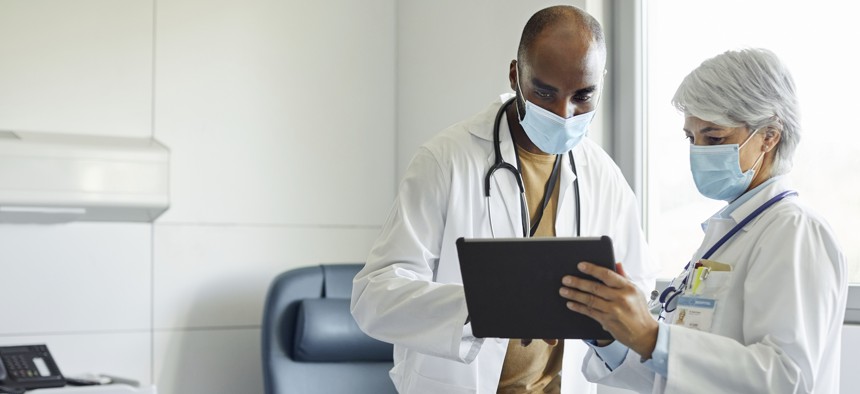Biosurveillance network crucial to public health preparedness, GAO says

Morsa Images / Getty Images
Data sharing and interoperability lessons states learned during the COVID-19 pandemic can help build a nationwide situational awareness and biosurveillance network.
The development of a real-time, interoperable public health surveillance network would alleviate problems states and public health organizations face responding to infectious disease outbreaks, a recent Government Accountability Office report said.
During national public health emergencies like the COVID-19 pandemic, a nationwide situational awareness and biosurveillance network would facilitate early detection and rapid response.
Since 2006, the Department of Health and Human Services has been required to take steps to improve situational awareness of public health threats, but such a capability is still not operational, GAO said. However, challenges that were identified during COVID response could be addressed by HHS as the agency moves ahead with planning and implementation of a surveillance network.
According to a GAO survey of state public health officials, “human capital-related IT resources, interoperability among systems, technology resources, and clarity of guidance from the federal government” impeded the management of public health information. Public health organizations raised similar concerns and added that increased reporting requirements and limitations on data collected hindered collaboration and health-related data sharing.
Public health officials said a lack of trained IT staff was their primary challenge. They cited difficulties in hiring individuals with the requisite experience and skill sets to support various public health IT initiatives due to limited pay and competition within the federal and private sectors.
Legacy systems and interoperability constraints were another pain point. One state specifically mentioned its immunization information and surveillance systems were not interoperable, restricting officials’ ability to share data with other agencies. Some agencies were forced “to manually input data into different systems,” according to the report.
Technology demands brought on by COVID-19 were challenging across the board, as states discovered new problems during their response. One state discovered its disease surveillance system could only handle about 100 concurrent users, necessitating rapid system and data storage enhancements.
To establish a more robust public health infrastructure, states most commonly recommended improved reporting, early and continued collaboration with stakeholders throughout emergency response activities and standardizing and sharing data between federal and state entities to improve surveillance needs.
Citing these survey responses, GAO recommended HHS prioritize the development of a situational awareness and biosurveillance network and designate a lead agency to work with relevant state and local officials to document challenges and lessons learned from COVID-19 – especially those related information sharing – and incorporate these improvements into plans for the network.
“Until HHS takes steps to identify, document, share, and incorporate lessons learned from the COVID-19 pandemic, opportunities to improve the response to future and ongoing public health emergencies by learning from past challenges will likely be missed,” GAO said.





